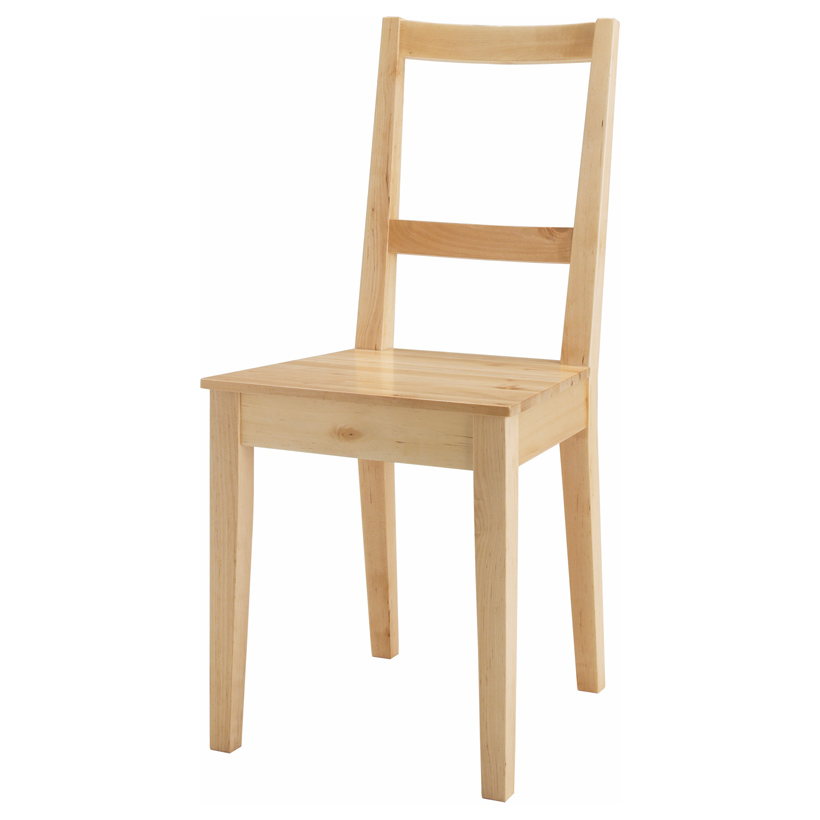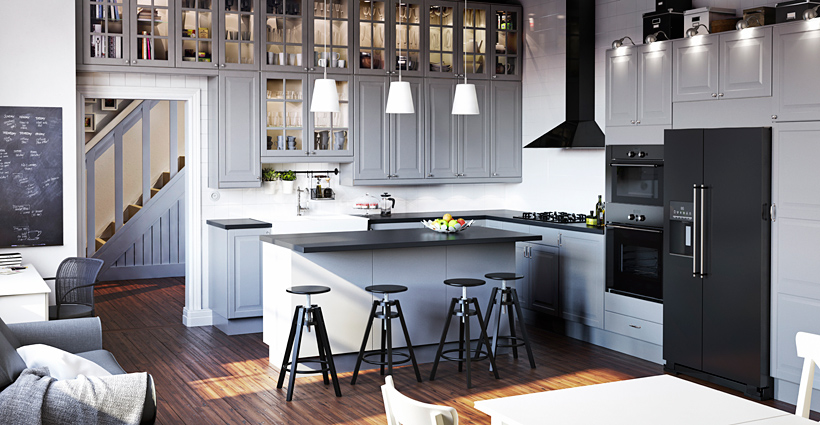The rooms in IKEA’s catalogues may look like wonderlands of inexpensive furniture, but they’re mostly computer generated. Like, 75 per cent computer generated. The Swedish juggernaut has experimented with CG product shots for almost a decade now, and it’s getting incredibly good at it. But it’s far from the only company doing it.
We learned about the visual trickery a few years back when IKEA’s 208 million catalogues were revealed to be more graphic designer than interior designer. After the Wall Street Journal went behind the scenes then, Kirsty Parkin at CGSociety recently chatted with IT Manager Martin Enthed, who handles IKEA’s in-house communication agency, to learn more. The first all-digital IKEA creation was a seat called Bertil, which debuted in print in 2006:

While Enthed recalls those early attempts as “quite bad,” the technique to perfect that kind of single product image was getting better and smoother, though initially, those were all they had planned. “There was no vision initially to create entire rooms in CG, like we do now. We just wanted to create the individual pieces — the ones you see on white backgrounds on the web,” he told Parkin.
It’s Not Just IKEA
But as it turns out, IKEA is far from alone in the race towards a rendered future. Companies like the UK based Pikcells have built their entire businesses around rendering hyper-realistic ads for furniture and product companies — and often, not even magazine editors can tell the difference.
So what’s driving the shift? For one thing, photographing actual, physical pieces — coordinating prototypes and shoots, allowing for evolutions and new incarnations — can be more challenging, and way more expensive, than making tweaks on a computer file. So it makes sense that companies would eventually experimenting with recreating these more “lived-in” environments. Or creating them from scratch. Take a look at this commercial for the kitchen countertop company Silestone, for example, which would have been far more expensive to produce as an IRL spot.
What’s more, CG product shoots make it far easier for companies to plan their catalogues in advance. While you might not have a sample of your product in every colour early enough to actually photograph it before launch, you could certainly render it months in advance. Considering the speedy product pipeline of many major companies like IKEA, it simply makes more financial sense to render.

A Whole New Industry
The shift is also changing how young, creative people — who once might have become photographers — choose to specialize in emerging fields. For example, at IKEA, 3D artists picked up photography, and vice-versa, to understand how to compose these comfortable virtual worlds:
“We understand how important the knowledge of home furnishing is. How homes look, how homes feel, and so on. The experienced photographers at IKEA have been working with the interior designers on re-creating this feel for fifteen to twenty years, some of them. We needed to translate that knowledge over to the 3D artists who were tech-savvy but in some cases coming directly from school. We needed them to understand the kind of feel we wanted the images to convey. It was very hard at the beginning,” Enthen said.
The rendering software itself is improving by leaps and bounds too.
For example, there’s Vray, a 3D-rendering software that enables different kinds of views, from “coarse to crisp,” with the adjustment of a single slider switch. IKEA, for one, has long since created its own in-house system which integrates that technology. With those new custom tools, it’s been able to create a massive backlog of 25,000 ultra-hi-res images to pull from — images that can work small-scale in the catalogue, or blown up big on the side of a showroom. Each of those individual models are made in four resolutions, which can be swapped in or out depending on whether it’s necessary to see the threads on the sofa upholstery or just get the look of the scene.
Companies want to make their products — whether they’re burgers or countertops — look perfect, even though we all know that McDonald’s doesn’t really look that good in person. But for companies that deal with physical objects like furniture and gadgets, there’s a point where our eyes won’t be able to tell the difference between a photo and a rendering anymore. If — when — IKEA goes all-digital, we might not even notice. [CGSociety]
